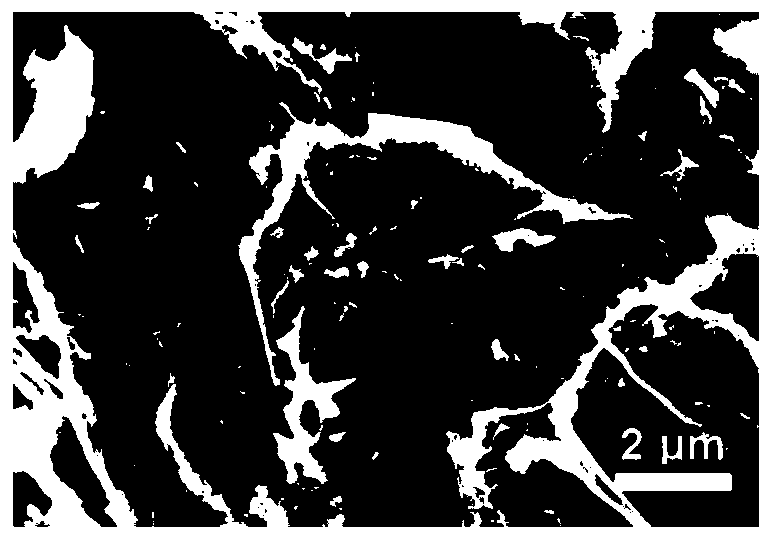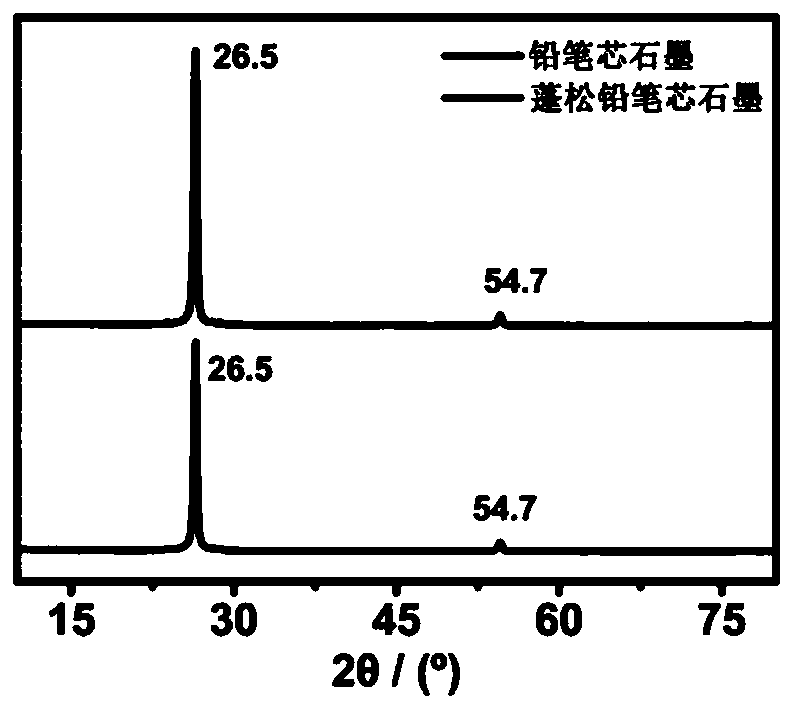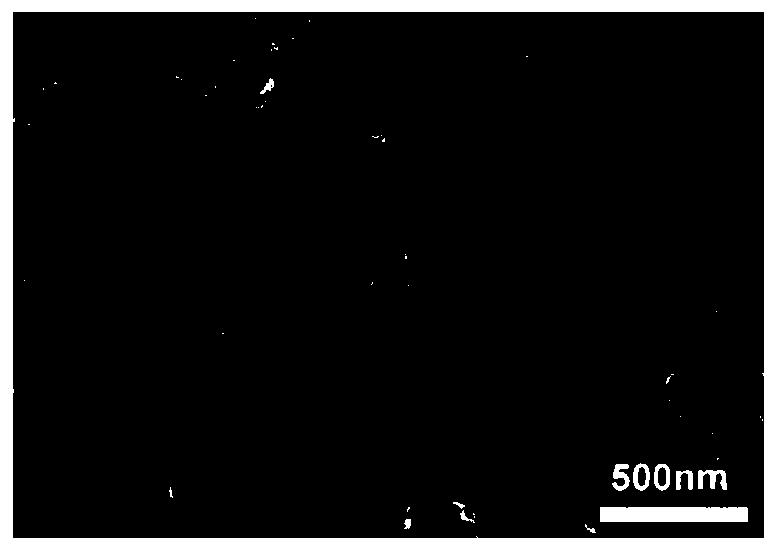Preparation method and application of dual function expanded graphite/nanogold composite electrode
A composite electrode, nano-gold technology, applied in nanotechnology, nanotechnology, nanotechnology for sensing, etc., can solve the problems of poor sensor stability, cumbersome, expensive carbon materials, etc., achieve low detection limit, avoid cumbersome Process, low cost effect
- Summary
- Abstract
- Description
- Claims
- Application Information
AI Technical Summary
Problems solved by technology
Method used
Image
Examples
Embodiment 1
[0030] (1) Insulate the Mitsubishi 2B pencil lead (diameter 0.5 mm) with AB glue, keep the length of the conductive part at 0.5 cm, rinse with secondary water, and dry at room temperature;
[0031] (2) Using the traditional three-electrode system, at 0.1M Na 2 SO 4 In the electrolyte solution, the pencil lead electrode is the working electrode, the platinum wire electrode is the counter electrode, and the saturated calomel electrode is the reference electrode;
[0032] (3) Using the constant potential method, a constant potential of 2 V was used for 300 s to obtain a pencil lead graphite electrode with a fluffy surface, which was taken out, rinsed with secondary water, and dried at room temperature.
[0033] The prepared fluffy pencil lead graphite was observed under a scanning electron microscope (SEM), and it was found that the surface of the fluffy pencil lead graphite became rougher, forming a 3D graphene-like surface. showed that the specific surface area of the fluff...
Embodiment 2
[0035] (1) Insulate the Mitsubishi 2B pencil lead (diameter 0.5 mm) with AB glue, keep the length of the conductive part at 0.5 cm, rinse with secondary water, and dry at room temperature;
[0036] (2) Using the traditional three-electrode system, at 0.1M Na 2 SO 4 In the electrolyte solution, the pencil lead electrode is the working electrode, the platinum wire electrode is the counter electrode, and the saturated calomel electrode is the reference electrode;
[0037] (3) Using the constant potential method, a constant potential of 2 V was used for 300s to obtain a pencil-lead graphite electrode with a fluffy surface, which was taken out, rinsed with secondary water, and dried at room temperature;
[0038] (4) Add 1g HAuCl 4 • 4H 2 O dissolved in 100mLH 2 O, obtain the chloroauric acid mother liquor of certain concentration;
[0039] (5) Take 1.65mL from the chloroauric acid mother liquor and disperse it in 10mL PBS solution with a pH value of 7.4 to obtain HAuCl with a ...
Embodiment 3
[0044] (1) Insulate the Mitsubishi 2B pencil lead (diameter 0.5 mm) with AB glue, keep the length of the conductive part at 0.5 cm, rinse with secondary water, and dry at room temperature;
[0045] (2) Using the traditional three-electrode system, at 0.1M Na 2 SO 4 In the electrolyte solution, the pencil lead electrode is the working electrode, the platinum wire electrode is the counter electrode, and the saturated calomel electrode is the reference electrode;
[0046] (3) Using the constant potential method, a constant potential of 2 V was used for 300s to obtain a pencil-lead graphite electrode with a fluffy surface, which was taken out, rinsed with secondary water, and dried at room temperature;
[0047] (4) Add 1g HAuCl 4 • 4H 2 O dispersed in 100mLH 2 O, obtain the chloroauric acid mother liquor of certain concentration;
[0048] (5) Take 1.65mL from the chloroauric acid mother liquor and disperse it in 10mL PBS solution with a pH value of 7.4 to obtain HAuCl with a ...
PUM
 Login to View More
Login to View More Abstract
Description
Claims
Application Information
 Login to View More
Login to View More - R&D
- Intellectual Property
- Life Sciences
- Materials
- Tech Scout
- Unparalleled Data Quality
- Higher Quality Content
- 60% Fewer Hallucinations
Browse by: Latest US Patents, China's latest patents, Technical Efficacy Thesaurus, Application Domain, Technology Topic, Popular Technical Reports.
© 2025 PatSnap. All rights reserved.Legal|Privacy policy|Modern Slavery Act Transparency Statement|Sitemap|About US| Contact US: help@patsnap.com



